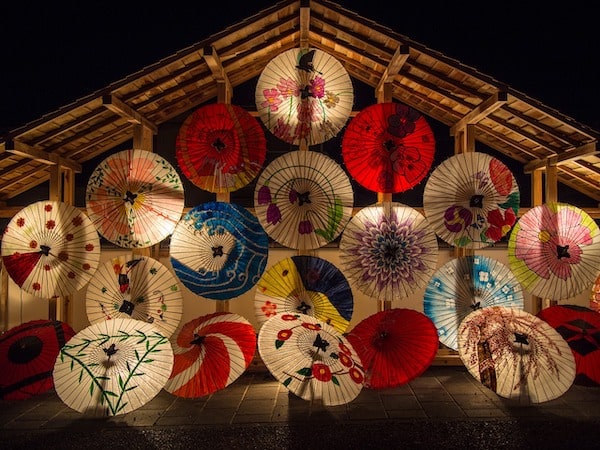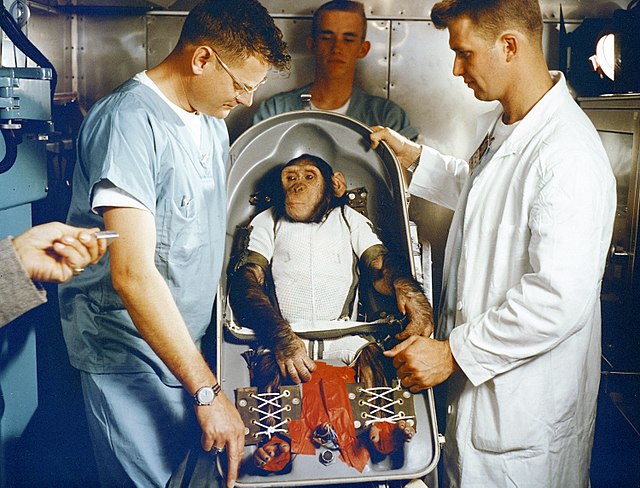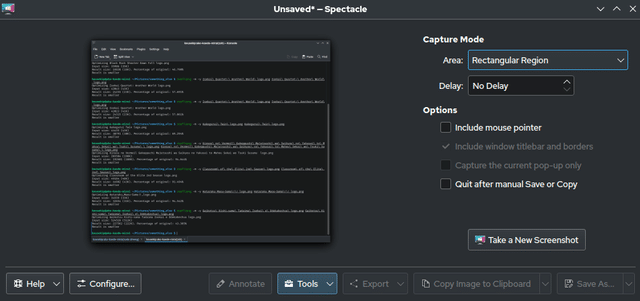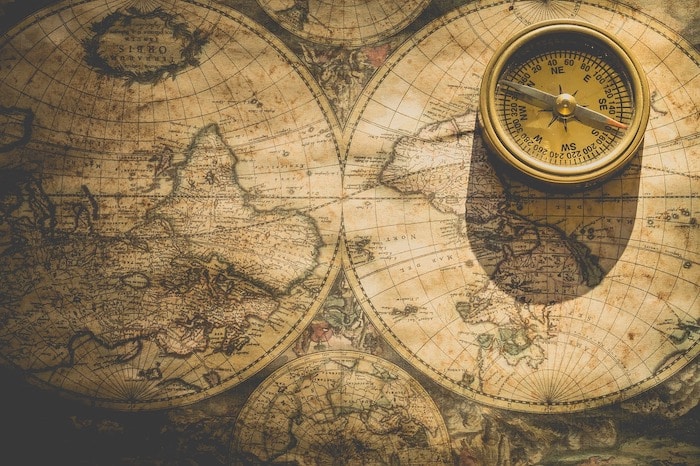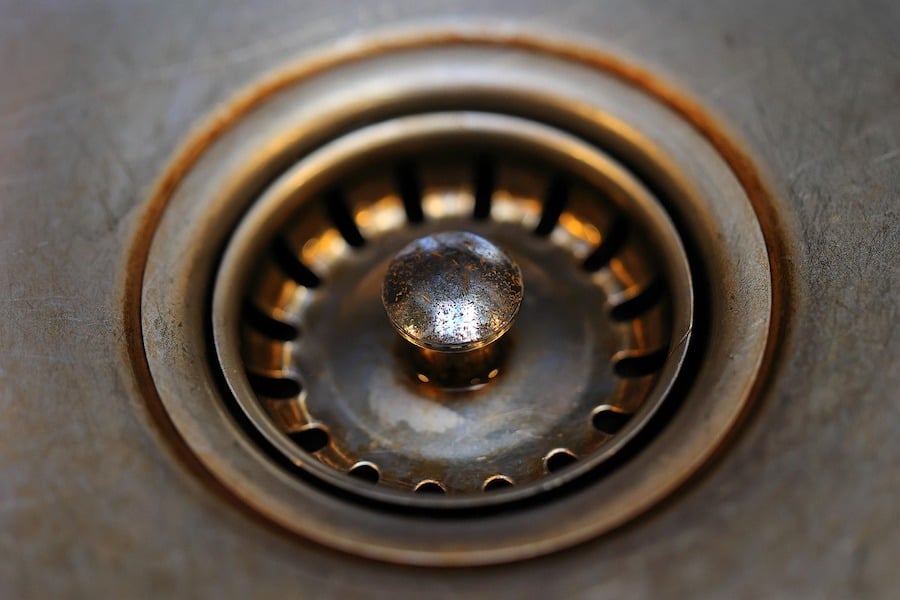From the cradle of Amaterasu, the Sun Goddess, Japan became a fierce nation with a history so deep and rich that the depths of the Mariana Trench shudder in jealousy.
However, in the long life of the East Asian nation, one particular era stands out shimmering, not because of its magnificence but because of a long list of sins and brutal history. Today, we will dive into that era and uncover 50 fascinating facts about Imperial Japan.
- Imperial Japan Once Ruled Over Millions Across Asia and the Pacific
- The Emperor Was A Living God
- Samurai Traditions In Military Tactics
- Japan Invented the First Purpose-Built Aircraft Carrier
- Secret Bioweapon Experiments In China
- Kamikaze Pilots Were Not Always Volunteers
- Japan Attacked the United States with Balloon Bombs
- A Very Short War
- Why The United States Annexed Hawaii
- The Imperial Army and Navy Disliked Each Other
- A Global Spy Network
- The First Japanese Nobel Prize Winner
- Tokyo Was Firebombed Into Rubble
- Japan Had A Nuclear Program
- The Emperor’s Voice Was Heard Publicly for the First Time in 1945
- Japan Used Submarines to Launch Aircraft
- Soldiers Practiced with Wooden Guns
- A Japanese Soldier Fought Until 1974
- The Imperial Forces Occupied Parts of Alaska
- The Largest Battleship Ever Built Was Japanese
- The Navy Had Underwater Aircraft Carriers
- Women Did Factory Work
- The Military Used Comfort Women
- The Surrender Almost Didn’t Happen
- Soldiers Ate Candy Made of Whale
- The Imperial Army Tried Training Monkeys
- The Imperial Army’s Allies Included Nazi Germany and Italy
- Rice Riots Forced Political Changes
- Japan Colonized Korea for 35 Years
- The Great Kanto Earthquake
- Japan Tried to Create A New World Order
- Soldiers Carried Good Luck Flags
- Imperial Japan Had a Secret Plan against Australia
- The Military Used Poison Gas in China
- The Tokyo 1940 Olympics That Never Was
- The Anime Propaganda
- The Economy Relied On Textiles
- The Military Let Teenage Boys Join
- Soldiers Became Cannibals
- The Navy Pioneered Night Fighting
- The Imperial Family Claimed to Rule for 2,600 Years
- They Invaded Siberia
- Rice Became Currency
- The Military Used Pirates
- The Surrender Split the Government
- Soldiers Wore 1,000-Stitch Belts
- Japan Built Fake Structure to Fool Bombers
- The Military Used Ghost Stories for Propaganda
- Schools Taught Imperial Mythology
- The Imperial Navy Had a Super Submarine
- Conclusion
Imperial Japan Once Ruled Over Millions Across Asia and the Pacific
At its peak during World War II, Imperial Japan controlled territories from Korea and China to parts of Southeast Asia and the Pacific islands; these were created through military campaigns and alliances.
Japan’s expansion began in the late 19th century with the annexation of Taiwan in 1895 and Korea in 1910. By the 1940s, the empire stretched from Manchuria in the north to Indonesia in the south, encompassing over 7 million square kilometers.
The goal was to create a self-sufficient bloc free from Western influence, but the harsh occupation policies often alienated local populations.
The Emperor Was A Living God
Until 1945, people believed emperors were direct descendants of the Sun Goddess Amaterasu. Emperor Hirohito, who ruled during the war, was adored as a divine figure.
This belief was deeply ingrained in Japanese culture and used to justify the nation’s imperial ambitions.
After the imperial army’s surrender in 1945, Hirohito renounced his divine status under pressure from the Allied forces; this marked a dramatic shift in Japanese society as the emperor transitioned from a god-like figure to a symbolic head of state.
Samurai Traditions In Military Tactics
Even after the samurai class ended in the late 1800s, their code of honor, ‘bushido,’ shaped Japan’s military culture.
Bushido emphasized loyalty, discipline, and sacrifice, values instilled in soldiers during the imperial era.
The military adopted samurai rituals, such as the use of swords and the practice of seppuku (ritualistic suicide), to avoid dishonor; these traditions continued to inspire troops, but they also contributed to the brutal tactics and refusal to surrender seen during World War II.

Japan Invented the First Purpose-Built Aircraft Carrier
The Hosho, launched in 1922, was the first ship designed as an aircraft carrier. This innovation revolutionized naval warfare and allowed project power across vast distances.
The Hosho played a key role in developing carrier tactics used in World War II. Japan’s early lead in carrier technology gave it a significant advantage in the Pacific, but the United States eventually surpassed Japan with its industrial capacity and technological advancements.
Secret Bioweapon Experiments In China
Unit 731, a covert military unit, conducted horrific experiments on prisoners in China. Led by General Shiro Ishii, the unit tested biological weapons like plague, anthrax, and cholera on live subjects.
Victims included Chinese civilians, POWs, and even children.
The experiments remained secret for decades, and many of the perpetrators escaped prosecution after the war in exchange for sharing their research with the United States.
Kamikaze Pilots Were Not Always Volunteers
While some kamikaze pilots willingly sacrificed themselves, others were pressured or ordered into suicide missions. The kamikaze program, officially called Tokubetsu Kogekitai, began in 1944 as Japan’s situation grew desperate.
Pilots were often young, inexperienced, and indoctrinated with the belief that dying for the emperor was the ultimate honor. Over 3,800 kamikaze pilots died during the war, sinking dozens of Allied ships.
Japan Attacked the United States with Balloon Bombs
In 1944 and 1945, Japan launched over 9,000 hydrogen balloons carrying explosives across the Pacific. The balloons, made of paper and rubberized silk, were designed to ride the jet stream to North America.
Around 300 reached the United States, causing minor damage and six deaths in Oregon. The program was largely ineffective but demonstrated Japan’s ingenuity and determination.
A Very Short War
The 1894 Battle of Pungdo against China ended quickly when Japanese ships sank Chinese vessels near Korea.
This battle marked the start of the First Sino-Japanese War, which ended with Japan’s victory and the annexation of Taiwan. The war established Japan as a rising power in East Asia and set the stage for further expansion.
Why The United States Annexed Hawaii
In the late 1800s, the United States annexed Hawaii in 1898 after fears of Japan gaining control of the island spread. This early rivalry foreshadowed the tensions that led to confrontation in World War II.
The Imperial Army and Navy Disliked Each Other
The Japanese army and navy’s rivalry was so intense they often refused to share resources or strategies. The army focused on continental expansion in Asia, while the navy prioritized control of the Pacific.
This division weakened Japan’s war effort, as the two branches competed for funding and influence rather than cooperating.
A Global Spy Network
Before World War II, Japanese spies operated in the United States, Europe, and Asia, gathering intel on military tech and political strategies.
One notable spy was Takeo Yoshikawa, who provided critical information before the attack on Pearl Harbor.
Japan’s intelligence efforts were sophisticated but often hampered by internal rivalries and overconfidence.

The First Japanese Nobel Prize Winner
Physicist Hideki Yukawa won the Nobel Prize in 1949 for his work on nuclear forces (predicting meson subatomic particles).
His research began during Imperial Japan, but the war disrupted scientific progress.
Yukawa’s achievement was a source of national pride and marked Japan’s emergence as a leader in science and technology.
Tokyo Was Firebombed Into Rubble
In March 1945, US bombing raids destroyed 16 square miles of Tokyo, killing over 100,000 people. The firebombing campaign targeted civilian areas to break Japan’s morale.
The destruction was so extensive that it surpassed the damage caused by the atomic bombs in Hiroshima and Nagasaki.
Japan Had A Nuclear Program
During World War II, Japan pursued nuclear weapons but lacked resources and time. The program, led by physicist Yoshio Nishina, made little progress compared to the Manhattan Project.
Japan’s nuclear ambitions failed after the war, but the research laid the groundwork for its later peaceful energy program. Imagine if they had successfully built a weapon.
The Emperor’s Voice Was Heard Publicly for the First Time in 1945
Hirohito’s radio announcement of Japan’s surrender was the first time ordinary citizens heard his voice. Many couldn’t understand his formal language, a mix of classical and modern Japanese. The broadcast marked the end of the war and the beginning of Japan’s postwar transformation.
Japan Used Submarines to Launch Aircraft
The I-400 submarines, which could carry three planes, were designed to bomb the Panama Canal. These massive subs were a technological marvel but arrived too late to impact the war. Only three got produced, and none saw combat.

Soldiers Practiced with Wooden Guns
Due to resource shortages late in World War II, some troops trained with wooden rifles and practiced bayonet charges with bamboo sticks; this reflected Japan’s dire situation as its industrial capacity dwindled under Allied bombing.
A Japanese Soldier Fought Until 1974
Hiroo Onoda hid in the Philippines for 29 years, refusing to believe the war had ended. He finally surrendered in 1974 after his former commander traveled to the island to relieve him of duty.
Onoda’s story highlights the extreme loyalty and indoctrination of Japanese soldiers.
The Imperial Forces Occupied Parts of Alaska
Japanese forces seized the Aleutian Islands of Attu and Kiska in World War II. It was the first American soil occupied by a foreign army since 1812. The US retook the islands in 1943 after a brutal campaign.
The Largest Battleship Ever Built Was Japanese
The Yamato, commissioned in 1941, weighed 72,000 tons and had 18-inch guns. It was a symbol of Japan’s naval power but was sunk by American planes in 1945. The Yamato’s fate marked the end of the battleship era.
The Navy Had Underwater Aircraft Carriers
During World War II, Japan developed a unique type of submarine called the Sen-toku class. These massive submarines could carry small, foldable aircraft launched for surprise attacks.
The idea was to use them for long-range missions, even striking targets as far away as the US mainland. However, only three were built, and none saw actual combat before the war ended.
Women Did Factory Work
As men went to the frontlines, Japan faced a labor shortage, especially in factories that produced weapons, aircraft, and other military supplies.
Women were recruited into the workforce as part of the Joshi Teishintai, or Women’s Volunteer Corps, to fill in the gap. They worked long hours under harsh conditions and played a crucial role in keeping the war effort going.
The Military Used Comfort Women
One of the darkest chapters of Japan’s wartime history was the forced sexual slavery of thousands of women from occupied territories, including Korea, China, and the Philippines.
These women, known as comfort women, were taken to military-run brothels and suffered horrific abuse. The issue remains highly controversial, with ongoing disputes between Japan and other countries over accountability.
The Surrender Almost Didn’t Happen
On August 15, 1945, Japan was set to announce its surrender following the atomic bombings of Hiroshima and Nagasaki. However, a group of hardline military officers attempted a coup to prevent Emperor Hirohito from broadcasting his surrender message.
They seized control of the Imperial Palace for a short time but failed to stop the recording from being aired, bringing World War II to an end.

Soldiers Ate Candy Made of Whale
With food supplies dwindling, Japanese troops had to rely on whatever was available. One unusual ration was a hard candy cooked from powdered whale meat mixed with sugar. It provided quick energy but was a far cry from actual sweets.
The Imperial Army Tried Training Monkeys
In the 1930s, Japanese scientists experimented with training monkeys to assist soldiers. The idea was that monkeys could carry small weapons, deliver messages, or even help in sabotage missions. However, it quickly became clear that this wasn’t practical, and the plan failed.
The Imperial Army’s Allies Included Nazi Germany and Italy
In 1940, the IJA signed the Tripartite Pact with Nazi Germany and Fascist Italy, forming the Axis Powers. The alliance was to counter the influence of the United States and the Soviet Union.
Despite the pact, Japan and Germany rarely coordinated military operations, focusing on separate regions, Japan in the Pacific and Germany in Europe.
Rice Riots Forced Political Changes
Japan faced a severe rice shortage, causing food prices to skyrocket in 1918. Frustrated citizens took to the streets in protests that escalated into nationwide riots.
The unrest forced the government to implement political reforms and pushed Japan toward a more democratic system in the 1920s.
Japan Colonized Korea for 35 Years
From 1910 to 1945, Korea was under Japanese rule, during which its people faced harsh treatment, forced labor, and cultural suppression. The government attempted to erase Korean identity by banning their language, forcing them to adopt Japanese names, and even conscripting them into the war effort.
The Great Kanto Earthquake
In 1923, a devastating earthquake struck the Tokyo region, killing around 140,000 people. In the aftermath, false rumors spread that Korean immigrants were looting and poisoning water supplies, leading to violent attacks against them.
The chaos gave Japan’s military more power, shifting the country toward authoritarian rule.
Japan Tried to Create A New World Order
Japan’s wartime propaganda promoted the Greater East Asia Co-Prosperity Sphere, an idea that Asia should be free from Western colonialism.
In reality, it was a justification for Japanese expansion and dominance over neighboring countries. Many occupied nations suffered under brutal military rule.
Soldiers Carried Good Luck Flags
Japanese soldiers often carried Yosegaki Hinomaru, a small Japanese flag covered in signatures and messages from family and friends. These flags were believed to bring protection in battle. The Allied troops eventually took many as souvenirs.
Imperial Japan Had a Secret Plan against Australia
Japan’s military had a strategy called Operation FS, which aimed to cut off Australia from Allied support by capturing islands like New Caledonia and Fiji. However, the plan died after Japan lost the Battle of the Coral Sea in 1942.
The Military Used Poison Gas in China
Despite international bans on chemical warfare, Japan used mustard gas and other chemical weapons against Chinese troops and civilians during the Second Sino-Japanese War. These attacks remained secret for decades.

The Tokyo 1940 Olympics That Never Was
Japan was to host the 1940 Summer Olympics, but as war in China escalated they withdrew, and the games were canceled due to World War II. The country finally hosted the Olympics in 1964.
The Anime Propaganda
During World War II, the government-funded animated films to promote nationalism and military pride. These anime productions were designed to boost morale and encourage support for the war effort.
The Economy Relied On Textiles
Before its rise as an industrial powerhouse, Japan’s economy relied heavily on silk and cotton exports. By the 1930s, however, the focus shifted toward heavy industry, particularly shipbuilding and weapons manufacturing for the military.
The Military Let Teenage Boys Join
As the war worsened, boys as young as 15 got conscripted into the army. Many went on dangerous or even suicidal missions, such as controlling kamikaze boats and defending islands to the death.
Soldiers Became Cannibals
In desperate conditions, some Japanese troops in remote battlefields, like New Guinea, resorted to eating prisoners of war and even their comrades to survive. These incidents remained hidden for decades after the war. Yikes!
The Navy Pioneered Night Fighting
The Imperial Japanese Navy developed advanced optics and training that gave them an edge in night battles. Early in the war, Japanese destroyers and cruisers proved highly effective in nighttime naval combat.
The Imperial Family Claimed to Rule for 2,600 Years
Japanese mythology traces the imperial family’s lineage back to Emperor Jimmu, who was said to have ruled in 660 BCE. However, historians believe the imperial line likely began much later, around the 6th century CE.
They Invaded Siberia
During Russia’s civil war (1918–1922), Japan joined the Allies in invading Siberia. Their goal was to gain regional influence, but they eventually withdrew without much success.
Rice Became Currency
During economic hardship, rice often replaced money as a form of trade in rural parts of the nation. It even became a form of tax or wage pay.
The Military Used Pirates
In the 1930s, the navy secretly employed Chinese pirates to smuggle supplies and attack enemy ships. These operations remained hidden from the public.
The Surrender Split the Government
After the atomic bombings, Japan’s leaders were deadlocked over whether to surrender. Emperor Hirohito’s decision ended the war in a rare direct intervention from the throne.
Soldiers Wore 1,000-Stitch Belts
Women would sew 1,000 small stitches into cloth belts for soldiers, believing they had protective powers. These belts were considered lucky charms in battle. However, their effectiveness was terrible as they didn’t work.
Japan Built Fake Structure to Fool Bombers
To protect cities from air raids, Japan constructed wooden decoys to mislead enemy bombers. However, American forces rarely fell for the trick, and the massive bombing campaign that killed tens of thousands continued.
The Military Used Ghost Stories for Propaganda
The Japanese government spread ghost stories about fallen soldiers haunting their enemies to demoralize Allied troops. These tales went over the radio and were published in comics.

Schools Taught Imperial Mythology
During the early 20th century, Japanese schools emphasized the country came through divine creation and that the emperor was a direct descendant of the gods.
Critical thinking and dissent were discouraged, as education was designed to foster loyalty and obedience to the state.
The Imperial Navy Had a Super Submarine
The IJN’s I-201 class submarines were among the fastest of World War II, capable of reaching 19 knots underwater, faster than many Allied subs. However, they were completed too late in the war to make any real impact.
Conclusion
We hope you enjoyed learning 50 amazing facts about imperial Japan. Don’t forget to check out our Quiz, China Facts, and Facts Database. Also, leave us a comment and share.

